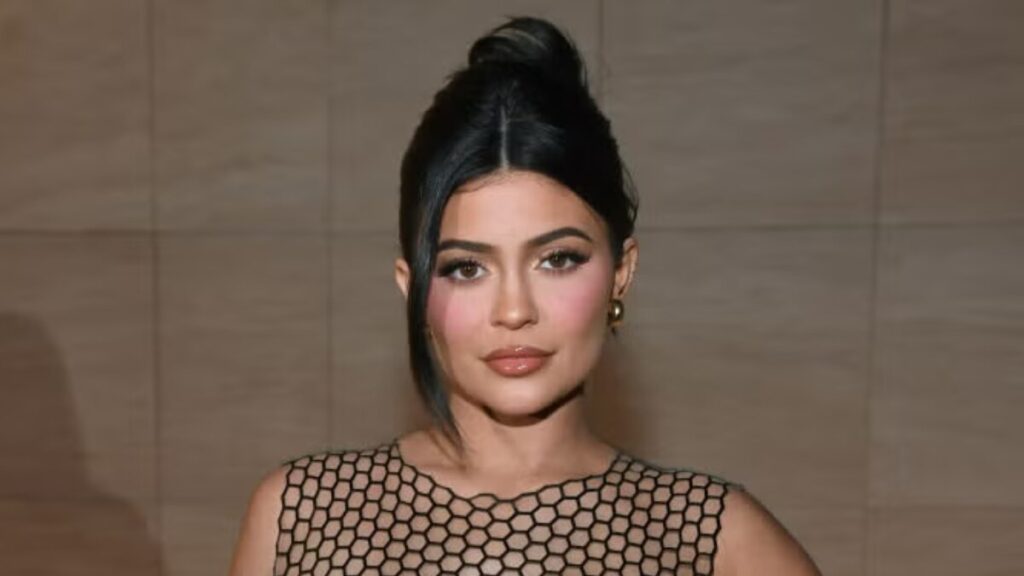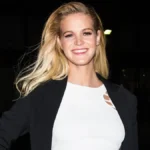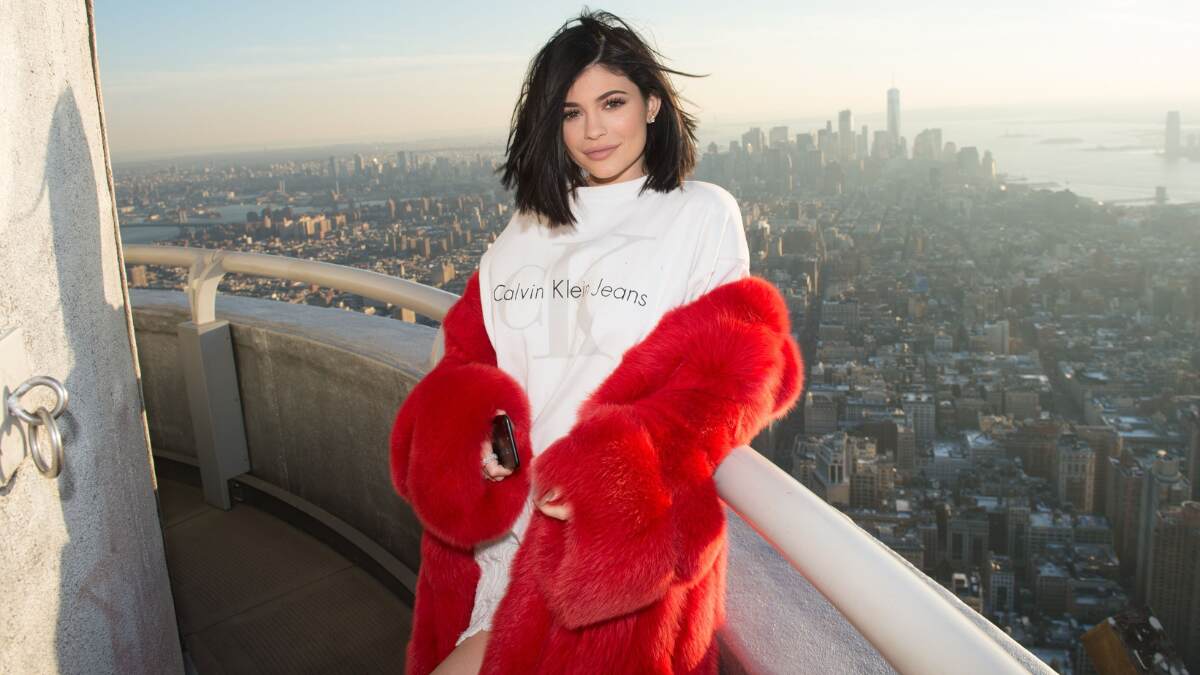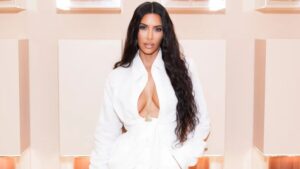Kylie Jenner is often reduced to a single headline: the youngest self-made billionaire. But to stop there is to miss the far more interesting truth: she isn’t just sitting on a fortune, she’s deliberately building a cultural empire. Behind the glossy Instagram posts and viral product launches lies a world few get to see — the boardrooms where contracts are signed, the private deals that shift entire industries, the strategic risks that shape her billionaire status.
Think of it as a vault. The public sees the gold-plated doors — the makeup palettes, the fashion statements, the Instagram milestones. But inside that vault are the hidden mechanisms of power: equity negotiations, licensing strategies, and investments that never make it to a social feed. This is the hidden side of Kylie Jenner, the part that reveals not only her business instincts but also the new rules of modern celebrity entrepreneurship.
This article unlocks that vault. What follows isn’t another tally of wealth or list of luxury homes — it’s a closer look at the strategies, rare moments, and private decisions that transformed Kylie Jenner’s name into one of the most valuable brands of our time.
The Real Story Behind Kylie Jenner’s Billionaire Status
How did Kylie Jenner make her money?
Kylie Jenner’s fortune didn’t appear overnight — it was engineered through a mix of smart branding and timely deals. The core of her wealth came from Kylie Cosmetics, the direct-to-consumer beauty brand she launched in 2015 with just a $29 Lip Kit. By selling exclusively online and marketing through her social platforms, she bypassed traditional retail costs and turned hype into profit. At its peak, Forbes valued the company at nearly $900 million, proof of how disruptive her model was to the beauty industry.
The turning point came in 2019, when Kylie sold 51% of Kylie Cosmetics to Coty Inc. for $600 million — a deal that secured her place on the billionaire list, even if later valuations sparked debate. Beyond cosmetics, she earns millions annually from sponsored Instagram posts, brand collaborations, and appearances. Add in her growing real estate portfolio in Calabasas and Beverly Hills, and Kylie’s empire extends well beyond lip kits.
Why was Kylie Jenner’s billionaire title disputed?
The short answer: valuation methods collided. In 2019, Forbes crowned Kylie a billionaire using private-company figures and industry multiples, assuming high margins from her direct-to-consumer model and explosive Lip Kit sales. That approach—common in media net-worth lists—relies on self-reported revenue, third-party estimates, and comps to infer a company value, then multiplies that by the owner’s stake to produce a headline net worth.
After the Coty acquisition (51% sold for a reported $600M), new information emerged. Coty’s disclosures and subsequent performance implied lower revenue and slower growth than earlier narratives suggested. Apply more conservative assumptions—discounts for lack of marketability, normalized margins, minority vs. control stakes, and post-deal integration risk—and the paper valuation drops. Subtract taxes, liquidity frictions, and debt, and the resulting net worth estimate can fall far below a media “billionaire” label.
Inside the Vault — Rare Moments and Private Deals
Unseen brand collaborations and licensing deals
Much of Kylie Jenner’s empire was built in the spotlight — lip kits selling out in minutes, Instagram reveals, drawing millions of likes. But the real power moves often happened quietly, through celebrity licensing and exclusive partnerships that never made it to a flashy grid post.
Take her Ulta Beauty rollout in 2018. On the surface, it looked like another retail expansion. In practice, it was a strategic licensing-style deal that put Kylie Cosmetics on shelves across America, shifting her image from a niche online brand to a mainstream beauty powerhouse. Ulta’s brick-and-mortar presence gave Kylie instant legitimacy with shoppers who didn’t live online, and it set the stage for the Coty acquisition months later.
There were other under-the-radar plays too: limited-edition capsule drops with fashion labels, white-label manufacturing partnerships that allowed rapid product expansion, and international distribution arrangements that quietly opened new markets. Each move extended her reach without diluting the exclusivity of her core products.
These low-profile but high-impact deals matter because they reveal Kylie not just as an influencer with a loyal audience, but as a business strategist who understood how to leverage partnerships for scale and brand equity — a playbook many celebrity founders now follow.
What Kylie doesn’t post on Instagram
Scroll through Kylie Jenner’s Instagram and you’ll see curated glamour — luxury cars, new launches, filtered selfies. What you won’t see are the hours of negotiations, contracts, and boardroom debates that keep her empire running. Every product line has a legal framework behind it: licensing agreements that define royalties, distribution contracts with global retailers, and non-disclosure clauses to protect trade secrets. Teams of lawyers and brand managers sit at the table long before a campaign goes live, aligning on everything from trademark protections to international compliance.
This behind-the-scenes world is less photogenic but far more consequential. A single licensing clause can unlock millions in passive revenue; a misstep in manufacturing terms can cost a brand its reputation. Kylie’s polished aesthetic makes success look effortless, yet it is strategy, not selfies, that sustains her billionaire status.
The truth is that what we don’t see often holds more value than what’s public. The Instagram post may spark the sale, but it’s the hidden contracts, equity negotiations, and careful brand protections that ensure Kylie’s empire continues to grow long after the likes fade.
Beyond Beauty — Kylie Jenner’s Expanding Portfolio
Real estate investments and hidden luxury assets
Kylie Jenner’s empire isn’t confined to lip kits and licensing deals — it extends into luxury real estate and portfolio diversification. Over the past few years, she has quietly assembled a collection of multimillion-dollar properties in Los Angeles, each move reflecting strategy as much as lifestyle.
Her Calabasas compound, where she planted early roots, signaled stability in the Kardashian-Jenner family’s longtime enclave. Later acquisitions, like her $36.5 million Holmby Hills estate and $15 million Hidden Hills property, positioned her in the same circles as entertainment moguls and tech elites. Rather than functioning only as private residences, these homes serve as appreciating assets in some of California’s most coveted ZIP codes — a hedge against market fluctuations in beauty and media.
Beyond the mansions, Kylie has invested in hidden luxury assets: custom cars, designer collections, and potentially art — the kinds of holdings that often sit quietly in vaults yet grow in value over time. Seen through the lens of strategy, these purchases are less about showing off and more about long-term wealth preservation. In a world where celebrity fortunes rise and fall with public image, Kylie’s real estate portfolio is her most grounded bet — bricks, mortar, and land that anchor an otherwise volatile empire.
What industries could Kylie Jenner enter next?
If Kylie Jenner has proven anything, she can spot cultural momentum and monetize it quickly. With wellness booming into a trillion-dollar industry, it’s easy to imagine Kylie extending her brand into supplements, clean skincare, or even mindfulness products — offering her audience more than just beauty, but a lifestyle of self-care.
Another natural path is baby and parenting products. As a mother of two, Kylie has an authentic entry point into a market where parents are increasingly loyal to trusted names. A Jenner-backed baby care line could mirror what Jessica Alba’s Honest Company achieved, blending personal credibility with mass-market appeal.
In fashion-tech, Kylie could leverage her influence to back innovations like AR try-ons, AI-driven personalization, or direct-to-avatar digital fashion — catering to both Gen Z consumers and the emerging metaverse economy.
Finally, international expansion looms large. Markets in Asia, the Middle East, and Latin America are hungry for celebrity-backed luxury brands, and tailoring her empire to different cultural contexts could unlock exponential growth.
Taken together, these moves would position Kylie not just as a beauty mogul but as a forward-looking entrepreneur shaping where celebrity business goes next.
Risks and Fragility of Celebrity Wealth
For all the headlines about billion-dollar empires, celebrity wealth is rarely untouchable. Fame can create fortune, but it can just as quickly destabilize it. The question many ask: Is Kylie Jenner’s billionaire status secure? — highlights how dependent such empires are on public perception, consumer trust, and the shifting tides of culture.
Consider Kanye West: once a cornerstone of Adidas’ Yeezy sales, he saw his valuation plummet when the partnership collapsed almost overnight. Or Britney Spears, whose financial struggles under a conservatorship revealed how fame and fortune can be controlled, diminished, or even lost despite enormous earnings. These cases underscore a truth that applies to Kylie as well: celebrity-driven brands walk a fine line between cultural relevance and vulnerability.
For Kylie, risks include market saturation in beauty, potential brand fatigue as consumer tastes evolve, and the unpredictable nature of social media — the very platform that built her reach. Legal disputes, supply chain disruptions, or even one poorly received product launch could ripple through her carefully managed empire.
The durability of Kylie’s wealth will depend less on Instagram hype and more on how effectively she diversifies, innovates, and protects her assets beyond the spotlight. Celebrity capitalism can create staggering wealth — but its fragility is always just beneath the surface.
Up Close with the Kylie Effect: What I Saw Beyond the Glamour
I still remember walking into an Ulta store the week Kylie Cosmetics first hit the shelves. The line snaked past perfume counters, teenagers clutched armfuls of lip kits like they were rare treasures, and the buzz felt more like a concert than a cosmetics launch. Sales associates kept rushing to restock the display, only for it to empty again in minutes. Parents looked both bemused and exhausted, while fans snapped selfies in front of the Kylie endcap as if it were a shrine.
What struck me wasn’t just the spectacle — the excitement was palpable — but the machinery behind it. This wasn’t an accident of hype; it was a carefully engineered strategy. The product drop had been teased for weeks, the Ulta distribution deal ensured national accessibility, and Kylie’s social channels turned every restock into a cultural event.
In that moment, I understood the Kylie Effect: a fusion of fandom, timing, and calculated business moves that blurred the line between celebrity and commerce. What looked like chaos on the shop floor was, in reality, the visible tip of a much larger strategy — proof that Kylie Jenner’s empire runs on far more than selfies and hashtags.
What Kylie Jenner’s Empire Reveals About Modern Celebrity
Kylie Jenner’s empire is more than a personal success story — it’s a case study in cultural entrepreneurship. Her rise signals a new era where fame itself becomes the most valuable form of capital, and where celebrities aren’t just endorsing products but building modern mogul status around their names.

She isn’t alone. Jay-Z transformed his artistry into Roc Nation and a billion-dollar portfolio, LeBron James built SpringHill into a media powerhouse while still dominating the NBA, and Gwyneth Paltrow’s Goop carved out a wellness empire that blends lifestyle with commerce. In each case, the celebrity is the brand, and the product is an extension of that identity.
Kylie fits neatly into this shift. By leveraging social media, she turned influence into equity, creating a business model where visibility itself is a growth engine. What she shows us is that fame as a business model isn’t just viable — it’s replicable, scalable, and increasingly global.
The takeaway? Celebrity entrepreneurship is no longer a side hustle. It’s the blueprint for cultural longevity in an economy where attention is currency. For the next generation of stars, Kylie’s empire illustrates both the potential and the playbook of building something that lasts beyond the spotlight.
More Than a Billionaire Headline
Step inside the “vault” of Kylie Jenner’s empire, and it becomes clear that her story isn’t defined by a single number on a Forbes list. Her billionaire status may grab headlines, but it’s the hidden strategies — the Coty deal, licensing arrangements, real estate plays, and careful diversification — that secure her place as more than a celebrity with products to sell. This is the machinery of a cultural empire, built not only on social media reach but on contracts, negotiations, and long-term positioning.
Kylie Jenner’s celebrity wealth strategy reflects a broader truth about modern entrepreneurship: influence is capital, and those who can translate it into lasting businesses will shape the next chapter of commerce. Her empire is as much about foresight and adaptability as it is about glamour.
In the end, Kylie’s vault teaches us that the future of fame is not in fleeting headlines but in how stars convert visibility into enduring value — a model that will define the next generation of moguls.
Mohit Wagh is the co-founder of The Graval with over 10 years of experience in SEO and content strategy. He specializes in crafting data-driven, authoritative content that blends cultural insight with digital growth.















5 thoughts on “Inside the Vault: Rare Moments, Private Deals, and the Hidden Side of Kylie Jenner’s Empire”